Dreamy Overnight French Toast Casserole Recipe for Lazy Sundays
Whipping up a mouthwatering french toast casserole can turn an ordinary morning into a delightful culinary adventure.
Morning meals never felt so exciting with this crowd-pleasing dish.
Soft bread cubes soaked in a rich custard create a breakfast masterpiece that melts in you mouth.
Families adore this simple yet impressive recipe that comes together with minimal effort.
Cinnamon and vanilla infuse each bite with warm, comforting flavors that make everyone smile.
Weekend brunch just got a serious upgrade with this irresistible breakfast sensation.
Perks Of French Toast Casserole Perfection
French Toast Casserole Ingredient Setup
Bread Base:Liquid Custard Mixture:Sweeteners and Spices:French Toast Casserole – The Easiest Way to Make It
Step 1: Prepare Bread Cubes
Cut bread into bite-sized cubes and spread them evenly in a generously buttered 9×13-inch baking dish.
Choose a sturdy bread like brioche or challah for the best texture and flavor.
Step 2: Create Creamy Custard Base
Whisk together in a large mixing bowl:Blend until all ingredients are completely smooth and well combined.
Step 3: Soak Bread Overnight
Pour the custard mixture over the bread cubes, gently pressing down to ensure every piece gets thoroughly coated.
Cover the baking dish with plastic wrap and refrigerate for at least 8 hours or overnight to allow bread to absorb all the delicious flavors.
Step 4: Craft Crumbly Topping
In a separate bowl, mix together:Use your fingers to create a crumbly, streusel-like texture.
Step 5: Bake to Golden Perfection
Preheat the oven to 350°F.
Sprinkle the prepared crumbly topping evenly across the soaked bread casserole.
Bake for 40-45 minutes until the top turns a beautiful golden brown and the center is set but slightly jiggly.
Step 6: Serve and Enjoy
Remove from the oven and let cool for 10 minutes.
Serve warm with maple syrup, a dusting of powdered sugar, fresh berries, or a dollop of whipped cream.
French Toast Casserole Made Perfect With Step-by-Step Tricks
Reheat French Toast Casserole Sweet And Soft
Sweet and Savory Sides for French Toast Casserole
French Toast Casserole with the Best Sweet Layers
FAQs
Thick, sturdy day-old bread like brioche, challah, or French bread are ideal. They absorb the egg mixture without falling apart and create a rich, custardy texture.
Yes, simply substitute regular bread with gluten-free bread. Choose a dense, thick-cut gluten-free option that can hold up to the egg mixture without becoming mushy.
You can assemble the casserole up to 24 hours before baking. Prepare it the night before, cover it, and refrigerate. This allows the bread to soak up the egg mixture thoroughly, enhancing the flavor and texture.
Absolutely! After assembling but before baking, you can wrap the casserole tightly and freeze for up to 2 months. Thaw overnight in the refrigerator before baking as directed.
Print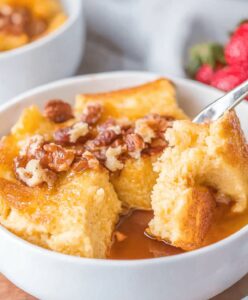
How To Make The Absolute Best French Toast Casserole Recipe
- Total Time: 1 hour
- Yield: 8 1x
Description
Indulgent Overnight French Toast Casserole blends classic breakfast comfort with elegant French-inspired flavors. Cinnamon-soaked bread layers promise a luxurious morning experience you’ll savor with each delightful, custardy bite.
Ingredients
Protein and Eggs:
- 6 large eggs
Bread:
- 1 loaf of French bread, cubed
Sugars and Sweeteners:
- 1/2 cup granulated sugar
- 1/4 cup brown sugar
Dairy:
- 2 cups whole milk
- 1/2 cup heavy cream
Spices and Seasonings:
- 1 teaspoon cinnamon
- 1/2 teaspoon nutmeg
- 1/4 teaspoon salt
Flavor Enhancer:
- 1 tablespoon vanilla extract
Instructions
- Prepare a spacious rectangular baking vessel with a light butter coating, then distribute bread cubes evenly across the bottom, creating a uniform layer.
- Create a luxurious custard base by thoroughly blending eggs, dairy products, sweetening agents, aromatic spices, and flavor enhancers in a large mixing bowl until smooth and well-incorporated.
- Gently cascade the silky custard mixture over bread cubes, meticulously ensuring each bread fragment becomes saturated and coated.
- Seal the baking dish with protective wrap and allow the mixture to rest and absorb flavors in the refrigerator for a minimum of four hours, preferably overnight.
- Activate the oven and calibrate temperature to a moderate 350°F, preparing for baking.
- Craft a delectable crumble topping by combining granulated brown sugar, flour, softened butter, and fragrant ground cinnamon, working the ingredients until they form a delightfully textured, sandy consistency.
- Generously disperse the crumbly topping across the chilled bread mixture, creating an enticing layer of sweetness.
- Transfer the casserole into the preheated oven and bake until the surface transforms into a golden-brown landscape with a set, slightly firm center, approximately 40-45 minutes.
- Remove from oven and allow a brief cooling period before serving, presenting with optional embellishments like maple syrup, powdered sugar dusting, or a vibrant medley of fresh seasonal fruits.
Notes
- Choose slightly stale bread like brioche or challah for the best texture and absorption of the custard mixture.
- Soak bread overnight to develop deeper, richer flavors and ensure every piece is perfectly saturated.
- Customize the spice blend by adding cardamom or replacing nutmeg with ginger for a unique twist.
- Make this dish gluten-free by using gluten-free bread and replacing wheat flour in the topping with almond flour.
- Prep Time: 15 minutes
- Cook Time: 45 minutes
- Category: Breakfast, Dessert
- Method: Baking
- Cuisine: French
Nutrition
- Serving Size: 8
- Calories: 300
- Sugar: 10 g
- Sodium: 150 mg
- Fat: 15 g
- Saturated Fat: 8 g
- Unsaturated Fat: 5 g
- Trans Fat: 0 g
- Carbohydrates: 35 g
- Fiber: 1 g
- Protein: 8 g
- Cholesterol: 140 mg

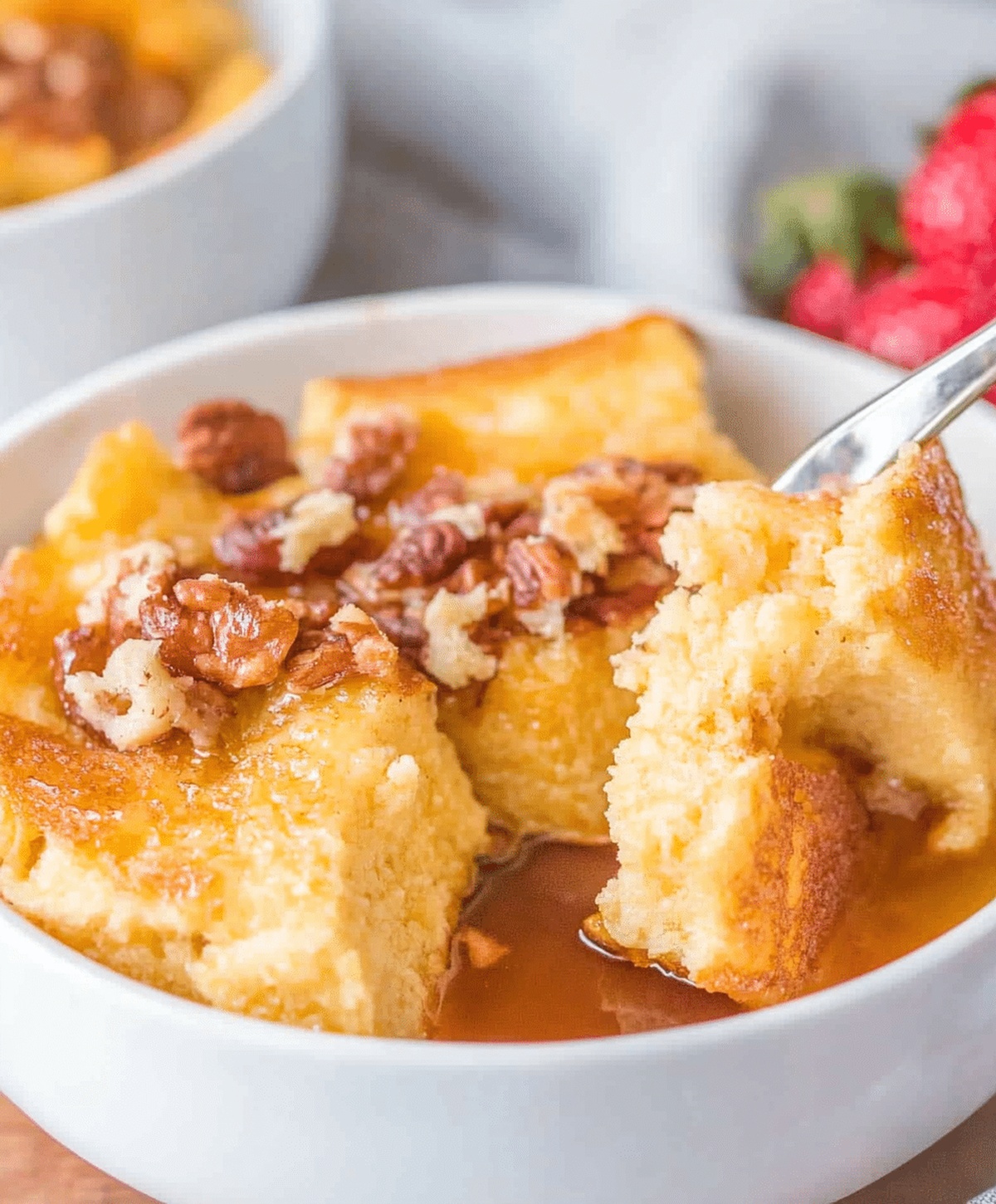
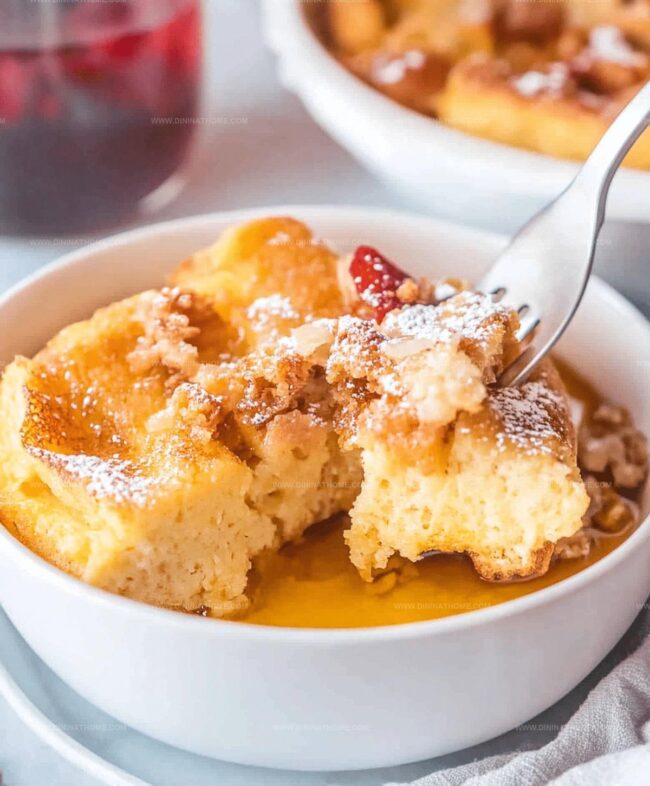
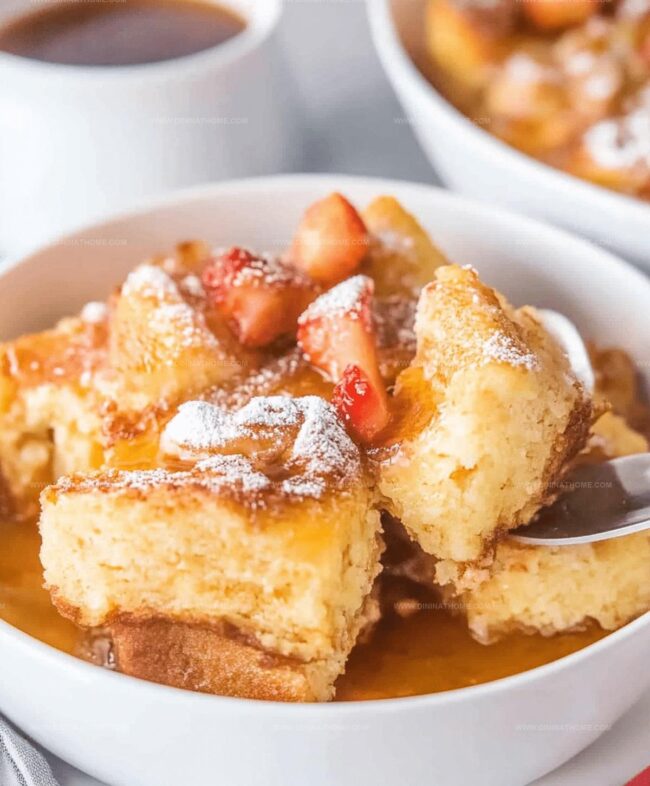
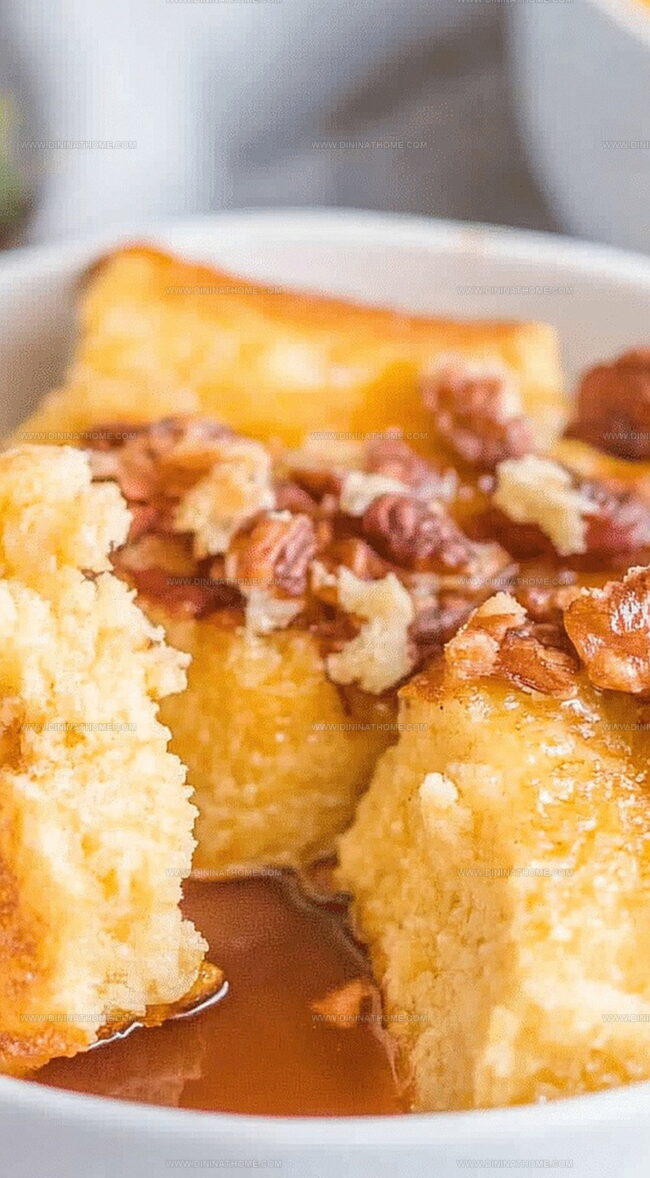
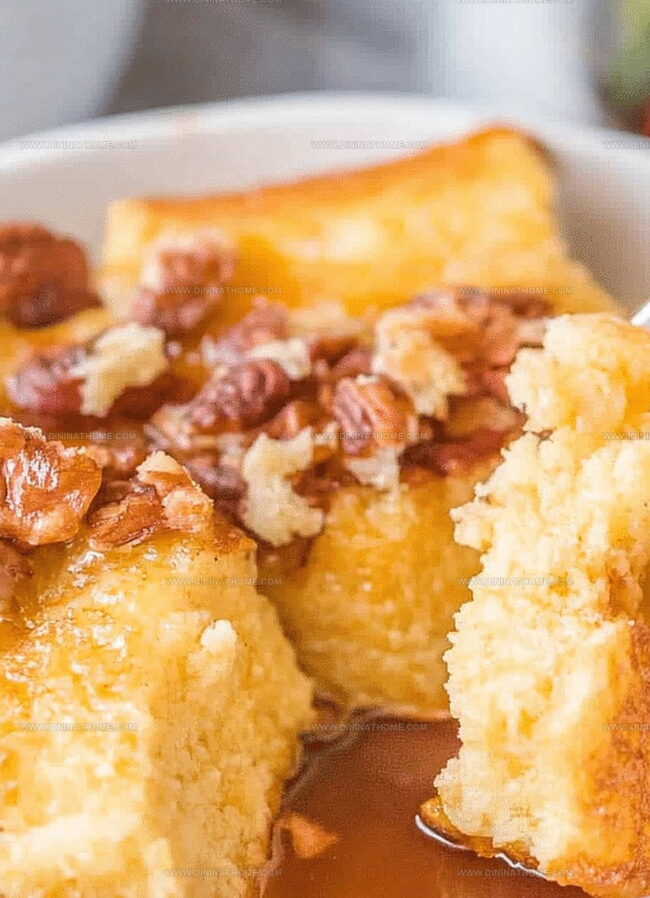
James Walker
Lead Recipe Developer & Culinary Educator
Expertise
Southern Cuisine & Farm-to-Table Cooking, Recipe Development & Testing, Culinary Education & Instruction
Education
School: Auguste Escoffier School of Culinary Arts
Program: Diploma in Culinary Arts and Operations
Focus: Comprehensive training in classical and modern culinary techniques, kitchen operations, and farm-to-table practices.
James didn’t learn cooking from a TV show, he learned it from busy kitchens, family gatherings, and long afternoons spent testing recipes the hard way.
After training at the Auguste Escoffier School of Culinary Arts, he brought his love for real, down-to-earth food to every dish he makes.
At Dining At Home, James loves building recipes that feel familiar but still have something special, like adding a twist to a classic or making a slow Sunday dinner feel brand new.
When he’s not in the kitchen, you’ll probably find him swapping garden tips at the farmers’ market or teaching his daughter how to flip pancakes without a mess (almost).